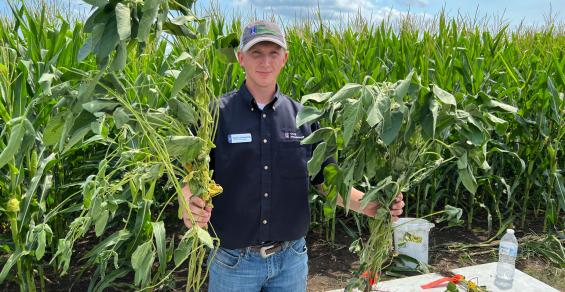If the weather doesn’t cheat you, an earlier planting date can boost returns.
There’s a growing trend across soybean country: flipping its planting date with corn. More farmers are finding that planting soybeans in April (and for some in March) is bringing bigger yields at harvest. What is it about soybean plants that offer that kind of opportunity?
At a recent field event at the University of Illinois, Fred Below, professor of crop physiology, offered a look at how early planting can make a difference and why.
“Soybeans capture light,” Below said. “They benefit form that longer growing season.”
It’s simple biology, give that soybean more sunlight and it grows more.
During the demonstration, Below and graduate student Sam Leskanich showed the difference in soybeans planted in early May (around corn planting time) and those planted later in May, and even soybeans planted in June, which is a traditional time for some.
The early-planted soybean was bigger, significantly bigger.
“For the early-planted soybean, there are 21 nodes,” Below said. “For the [later] planted soybean, there are just 12 nodes.”
It’s obvious that more nodes mean more soybeans, and Below noted that if you add just one more pod to every plant in an acre, you’ll boost yield by 2 bushels. That early-planted crop can put on more pods. Early planting allows you to take full advantage of the soybean’s ability to harvest light.
Laskanich and Below are working on the annual high-yield plots at the university and showed off benefits of corn and soybean planting. The key to higher yields is improving management from fertility to crop protection, which Below has long demonstrated.
Below explained that if you’re raising soybeans for a 6o-bushel yield, it’s unlikely you need to boost soybean fertility significantly. You won’t see a benefit.
However, if you’re aiming for 80 to 100 bushels per acre and planting early, Below says, “You’ll want to boost fertility [and] have that sulfur available.” And you’ll want to protect the crop from diseases, too.
The trend toward early-planted soybeans is boosting yield for more farmers. Below is an advocate as he looks at that 21-node plant that was pulled from the field. “It’s a no-brainer,” he said.



